Local dictionaries in ABBYY Lingvo x5: constructor for translators and not only

In order to work with foreign languages it has become easier, and it is more interesting to study them, quite recently we released our new dictionary service ABBYY Lingvo x5. At first - very briefly about what is new in this version:
- Mouse hover translation has become much more convenient. Now you can translate text in any format - for example, in a picture or video (here our recognition technology helps).
- Added 9 new languages: Hungarian, Greek, Danish, Kazakh, Dutch, Norwegian, Polish, Tatar, Finnish. Now in Lingvo 20 languages!
- Added a lot of new dictionaries - 74. At the same time, the most important dictionaries have been updated: Oxford Dictionary of English, New Oxford American Dictionary and English-Russian dictionary of general vocabulary.
- For many translation options, you can now see phrases and real usage examples (for the most popular languages). This is very useful if you are learning a language or want to find the most suitable translation option.
- Many possibilities for learning languages: updated Lingvo Tutor with new educational dictionaries and exercises, letter templates in different languages, videos and much more.
- Also, users can access the Lingvo x5 dictionaries from any device through the Lingvo.Pro portal for a year. You can add your own words to the portal, and all Lingvo.Pro users will immediately see them. To do this, just click on the icon with the globe in the lower part of the main program window (“Add your own translation variant ...”) and register on the portal. Words that you add to Lingvo.Pro will appear on your Lingvo card.
You can read more about this on the ABBYY website , and in this post we will talk about one of the most interesting features of Lingvo - creating your own dictionaries.
Practically everyone who is at work or studying faces foreign languages dreams of a miracle dictionary, in which everything that is needed is at hand. And a complete list of the meanings of the word, and synonyms, and specific abbreviations, and the correct pronunciation, and examples of use. The creators of the dictionaries, as they can, try to get closer to this ideal (and indeed, many modern dictionaries are already very good), but we are always missing something. Using the tools that are in Lingvo, you can create as educational dictionaries for learning new words, and professional - to preserve the unity of terminology. Provide them with pictures, audio and video files. And customize for yourself.
Why is this convenient?
First of all, a personal professional dictionary for a specialist is the quality of translation plus saving time, effort and traffic, which, in an unfavorable scenario, go in search of the right word from other sources. And if before all the most valuable things had to be entered into a notebook or the spreadsheet was trusted “word-translation-example-comment” with all the attendant risks, then in Lingvo you can keep your own vocabulary along with the built-in program. Unlike notebooks and Excel files, it is convenient to work with it thanks to the integration of the application with Word and the translation function by hover.
')

Secondly, the cards of your own dictionary, created in Lingvo, can be customized "by yourself" by adding pictures, links to web resources, audio and video files. For example, the image of a specific part (beam, support, fastener) will help to better understand a particular piece of text and visualize the assembly / installation of a structure. With the same purpose, any physical, chemical or production process is recorded on video, broken into stages and used as an auxiliary material. The correct pronunciation of the term can be recorded in the usual wav file. Include several audio recordings with different comments on the card if you want to indicate dialect or equal word pronunciation options.

Thirdly, not every word can get into a licensed dictionary. And in your own - maybe. Words denoting modern technologies, objects and phenomena, neologisms of foreign journalists and writers, jargon, euphemism, historicism - in general, anything. They saw an unfamiliar abbreviation LN Biopsy or the unusual use of the phrase “Black Mamba” - they entered into their vocabulary. Then you do not have to wander through the expanses of the network or rummage in the reference literature, vigorously recalling where exactly you saw it.

Fourthly, such a dictionary can be shared with colleagues within the company. For example, a new employee has come to your friendly team and he needs to help him adapt as soon as possible. Or something is urgently needed for the presentation, and you are on vacation: conquer Everest or are looking for Atlantis and your number is not available. Finally, your vocabulary content can simplify the tasks of colleagues from other departments and help them communicate productively with customers.
Fifthly, with the help of your own educational dictionary, it is convenient to prepare for foreign seminars, conferences and exhibitions. Especially when it is interactive - remember, in school, in foreign language lessons, we were often shown pictures, appealing to associative memory. In the meantime, we start a new card, we are actively working memory of mechanical and visual. By the way, you can also create a training dictionary in Lingvo Tutor, and then add words to exercises to test your own knowledge. Let me remind you that in such a dictionary pictures and multimedia do not fit yet.
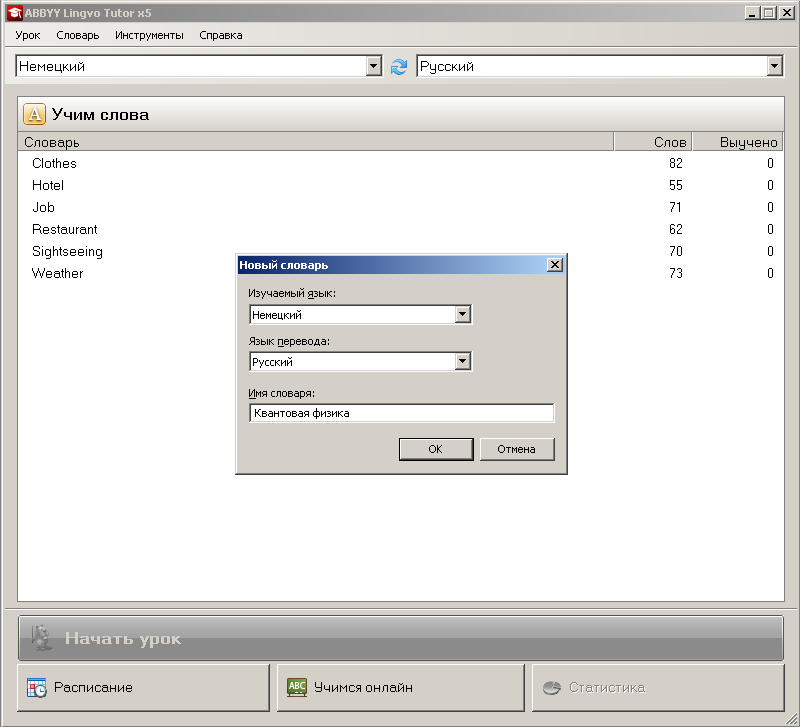
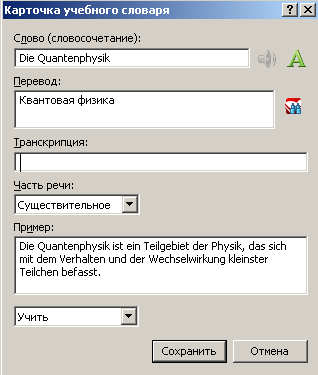
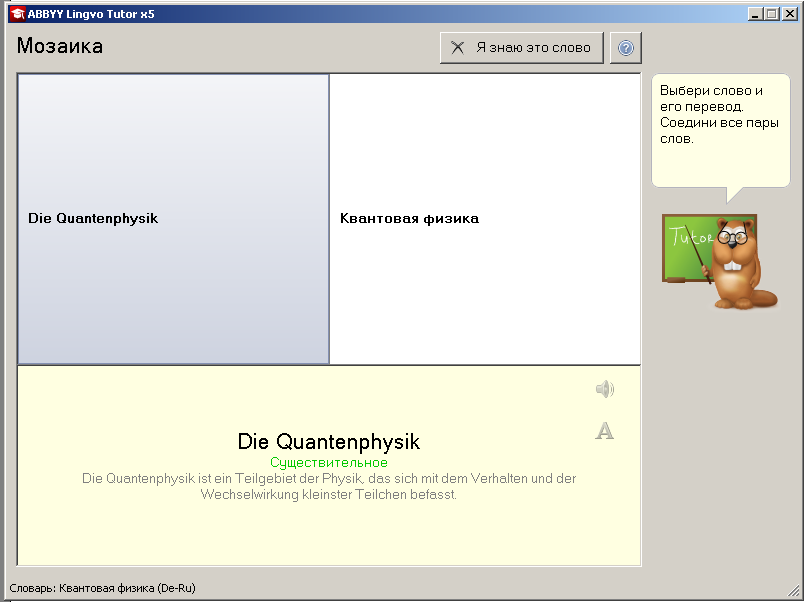
How it works
Lingvo x5 supports local dictionaries of two types: simple LUD (word-translation) and advanced LSD with all the design of ABBYY Lingvo system dictionaries, pictures, sounds and video. LUD dictionaries can be created, replenished and edited directly while working with the program. To create LSD dictionaries, use the DSL Compiler x5 program and DSL language commands. Replenishing and editing such a dictionary in parallel with the work in Lingvo will not work, but to remove it from the program, update and connect again nothing interferes.
Let's try to create a LUD dictionary. To do this, in the main Lingvo x5 window, go to the “Tools” menu, select the “Create / Edit Card” option and fill in all the required fields. Like this:

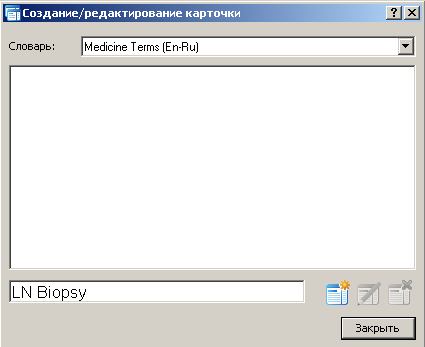

As a result, the program sees our dictionary and the word that we added to it:
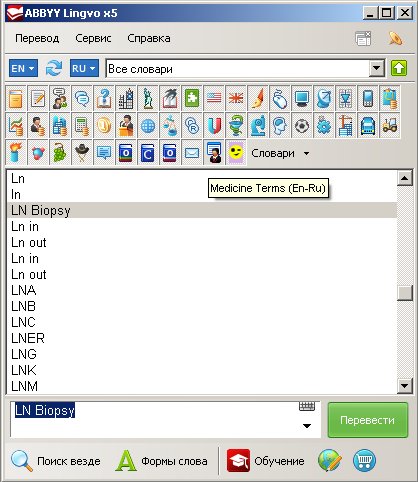
If you want to program a little bit, you can learn simple DSL commands and write an LSD dictionary. A full list of commands with decryption and a step-by-step process for creating dictionaries of this type is quite accessible in the Help (Help → Dictionaries → Create a dictionary yourself → How to create an LSD dictionary). The general principle is:
1) In a text editor (Word or Notepad) we create a dictionary file, write a DSL code and save it as a * .txt document in Unicode or ANSI encoding. The extension is manually changed to * .dsl. By the way, if you put a picture in a * .bmp or * .jpg size 14x21 in the folder with the file, it will become the icon of our LSD dictionary.
2) Completed what we got using DSL Compiler x5 (Start → Programs → ABBYY Lingvo x5 → ABBYY DSL Compiler x5). That is, specify the path to our file with a dictionary and click the "compile" button. As a result, 2 files will appear: the dictionary file * lsd and the file-reference * dde, which lists the errors that occurred during the creation of the dictionary. The file is useful because it shows clumsiness in the code and explains what was programmed wrong.
3) We connect our LSD dictionary to Lingvo (menu Tools → Add dictionary from file) and we get the following:

If desired, the card can be “complicated” by dividing into zones or adding to it nested cards (subcards) and links to other cards in your dictionary. Using the DSL language, you can create a dictionary that, by its capabilities and appearance, resembles ABBYY Lingvo dictionaries. And this is the code of a simple “bogogrey” card from the “Done for Fun” dictionary that you have already seen:
#NAME "Done for Fun"
#INDEX_LANGUAGE "English"
#CONTENTS_LANGUAGE "Russian"
blogorrhea
[s] Blogorrhea.wav [/ s]
[b] 1. [/ b] [p] noun [/ p]
[m1] 1) [p] blog. [/ p] blog ['] ray [/'] [com] ([i] network grafomania, sometimes LJ grafomania, more rarely - blogographer [/ i]) [/ com] [/ m]
[m2] [*] [ex] [lang name = "English"] Bloggorey - writing lengthy posts about anything. (literary translation) [/ ex] [ / *] [/ m]
[m2] [com] Jonathan Yang, “A Quick Guide for Bloggers” [i] (Jonathan Yang, author of The Rough Guide to Blogging) [/ i] [/ com] [/ m]
[m3] [s] guide.jpg [/ s] [/ m]
[m1] [b] English-English [/ b] [/ m]
[m1] 1) pathologically incoherent, repetitious blogging [/ m]
[m1] 2) incessant or compulsive holding forth on-line [/ m]
[m1] 3) Unispecting virtual readersizeomeome virtual readership [/ m]
[m1] [*] [url meadhunter.blogspot.com [/ url] [/ *] [/ m]
In general, creating your own dictionaries is quite an entertaining and quite creative process. Try it, and you will definitely succeed.
By the way, in the blog of the team ABBYY Lingvo - movement and fun about the release of the new version. If you want to win a new lingua and get a lot of fun, welcome :)
Elena Agafonova,
translator
Source: https://habr.com/ru/post/120958/
All Articles